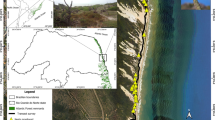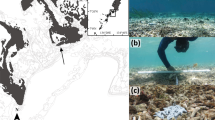Abstract
Previous studies have found strong relationships between calcium availability and eggshell pigmentation in the Great Tit (Parus major). According to the “structural function hypothesis”, protoporphyrins, the pigments responsible for reddish spots on speckled eggs, are deposited in those areas of the shell where calcium deposition is less intense. In the study reported here, which was carried out in three Blue Tit (Cyanistes caeruleus) populations in central Spain, we provide partial experimental support for the association between protoporphyrin eggshell pigmentation and shell thinning. Contrary to our expectations, we did not observe a decrease in the size and intensity of pigment spots for those eggs from calcium-supplemented nests. However, we did find that the provision of calcium-rich material during the egg-laying period led to a more wide distribution of pigment spots and reduced the proportion of eggs with defective shells (deviant pigmentation, dull and rough surface). When only the supplemented nests were considered in the analysis, within the same clutch we also detected differences in the spotting distribution between those eggs laid by female Blue Tits observed to have consumed calcium consumption on the day prior to laying and those observed not to have consumed calcium on the day prior to laying. Clutch size was not affected by the calcium supplementation. Female Blue Tits experimentally supplied with calcium-rich material had a shorter incubation period than control females, and they laid eggs with thicker shells. Eggshell thickness markedly affects the probability of hatching and could explain the lower proportion of unhatched late eggs found in supplemented nests in comparison with control ones. This study highlights the role of calcium in eggshell maculation and its effects on breeding performance of small passerines. We found the spotting distribution to be a good predictor of calcium deficiency. However, our results provide only mixed support for the “structural function hypothesis”: in our study populations, the thickness of the eggshell was intimately associated with calcium availability, but the relationship between calcium and protoporphyrin deposition remains far from clear.

Similar content being viewed by others
References
Álvarez G, Ramos J (1991) Estrategias alimentarias del ciervo (Cervus elaphus L.) en Montes de Toledo. Doñ Act Vert 18:63–99
Ar A, Paganelli CV, Reeves RB, Greene DG, Rahn H (1974) The avian egg: water vapour conductance, shell thickness, and functional pore area. Condor 76:153–158
Drent PJ, Woldendorp JW (1989) Acid rain and eggshells. Nature 339:431
Eeva T, Lehikoinen E (1995) Egg shell quality, clutch size and hatching success of the Great Tit (Parus major) and the pied flycatcher (Ficedula hypoleuca) in an air pollution gradient. Oecologia 102:312–323
Gill RMA, Beardall V (2001) The impact of deer on woodlands: the effects of browsing and seed dispersal on vegetation structure and composition. Forestry 74:209–218
Gill RMA, Fuller RJ (2007) The effects of deer browsing on woodland structure and songbirds in lowland Britain. Ibis 149:119–127
Gosler AG, Barnett PR, Reynolds SJ (2000) Inheritance and variation in eggshell patterning in the Great Tit Parus major. Pro R Soc Lond B 267:2469–2473
Gosler AG, Higham JP, Reynolds SJ (2005) Why are birds’ eggs speckled? Ecol Lett 8:1105–1113
Graveland J (1995) The quest for calcium: calcium limitation in the reproduction of forest passerines in relation to snail abundance and soil acidification. Ph.D. thesis. University of Wagenigen, Wageningen
Graveland J (1996) Avian eggshell formation in calcium-rich and calcium-poor soils: importance of snail shells and anthropogenic calcium sources. Can J Zool 74:1035–1044
Graveland J, Berends AE (1997) Timing of the calcium intake and effect of calcium deficiency on behaviour and egg laying in captive Great Tits, Parus major. Physiol Zool 70:74–84
Graveland J, Drent RH (1997) Calcium availability limits breeding success of passerines on poor soils. J Animal Ecol 66:279–288
Graveland J, van der Wal R (1996) Decline in snail abundance due to soil acidification causes eggshell defects in forest passerines. Oecologia 105:351–360
Graveland J, van Gijzen T (1994) Arthropods and seeds are not sufficient as calcium sources for shell formation and skeletal growth in passerines. Ardea 82:299–314
Graveland J, van der Wal R, van Balen JH, van Noordwijk AJ (1994) Poor reproduction in forest passerines from decline of snail abundance in acidified soils. Nature 368:446–448
Higham JP, Gosler AG (2006) Speckled eggs: water-loss and incubation behaviour in the Great Tit Parus major. Oecologia 149:561–570
Hoyt DF (1979) Practical methods of estimating volume and fresh weight of bird egg. Auk 96:73–77
Jagannath A, Shore RF, Walker LA, Ferns PN, Gosler AG (2008) Eggshell pigmentation indicates pesticide contamination. J Appl Ecol 45:133–140
Johannsenn LE, Solhøy T (2001) Effects of experimentally increased calcium levels in the litter on terrestrial snail populations. Pedobiology 45:234–242
Johnson LS, Barclay RMR (1996) Effects of supplemental calcium on the reproductive output of a small passerine, the House Wren (Troglodytes aedon). Can J Zool 74:278–282
Jubb M, Gosler AG, Wilkin TA (2006) Eggshell-pigmentation, soil calcium and the local abundance, distribution and diversity of woodland snails (Mollusca). Ardea 94:1–12
Kennedy GY, Vevers HG (1976) A survey of avian eggshell pigments. Comp Biochem Physiol 55B:117–123
Kilner R (2006) The evolution of egg colour and patterning in birds. Biol Rev 81:383–406
Krementz DG, Ankney CD (1995) Changes in total body calcium and diet of breeding house sparrows. J Avian Biol 26:162–167
Mänd R, Tilgar V (2003) Does supplementary calcium reduce the cost of reproduction in the Pied Flycatcher Ficedula hypoleuca? Ibis 145:67–77
Mänd R, Tilgar V, Leivits A (1999) Calcium, snails and birds: a case study. Web Ecol 1:63–69
Martin K, Sommer M (2004) Relationships between land snail assemblage patterns and soil properties in temperate-humid forest ecosystems. J Biogeogr 31:531–534
Martínez-de la Puente J, Merino S, Moreno J, Tomás G, Morales J, Lobato E, García-Fraile S, Martínez J (2007) Are eggshell spottiness and colour indicators of health and condition in Blue Tits Cyanistes caeruleus? J Avian Biol 38:377–384
Moreno J, Osorno JL (2003) Avian egg colour and sexual selection: does eggshell pigmentation reflect female condition and genetic quality? Ecol Lett 6:803–806
Pahl R, Winkler DW, Graveland J, Batterman BW (1997) Songbirds do not create long-term stores of calcium in their legs prior to laying: results from high-resolution radiography. Proc R Soc Lond B 264:239–244
Patten MA (2008) Geographic variation in calcium and clutch size. J Avian Biol 38:637–643
Pedersen S, Nilsen EB, Andreassen HP (2007) Moose winter browsing affects the breeding success of great tits. Écoscience 14:499–506
Perrins CM (1996) Eggs, egg formation and the timing of breeding. Ibis 138:2–15
Ramsay SL, Houston DC (1999) Do acid rain and calcium supply limit eggshell formation for Blue Tits (Parus caeruleus) in the U.K.? J Zool 247:121–125
Ramsay SL, Houston DC (2003) Amino acid composition of some woodland arthropods and its implications for breeding tits and other passerines. Ibis 145:227–232
Reynolds SJ, Mänd R, Tilgar V (2004) Calcium supplementation of breeding birds: directions for future research. Ibis 146:601–614
Sanz JJ (2001) Experimentally increased insectivorous bird density results in a reduction of caterpillar density and leaf damage to Pyrenean oak. Ecol Res 16:387–394
Sanz JJ, García-Navas V (2009) Eggshell pigmentation pattern in relation to breeding success of Blue Tits (Cyanistes caeruleus). J Anim Ecol 78:31–41
Sanz JJ, García-Navas V, Ruiz-Peinado JV (2010) Effect of habitat type and nest site features on the breeding performance of great and blue tits in a Mediterranean landscape. Ornis Fenn 87 (in press)
Solomon SE (1987) Egg shell pigmentation. In: Wells RG, Belyarin CG (eds) Egg quality—current problems and recent advances. Butterworths, London, pp 147–157
Solomon SE (1997) Egg and eggshell quality. Iowa State University Press, Ames
Spitzer L, Konvicka M, Benes J, Tropek R, Tuf IH, Tufova J (2008) Does closure of traditionally managed open woodlands threaten epigeic invertebrates? Effects of coppicing and high deer densities. Biol Conserv 141:827–837
Stewart AJA (2001) The impact of deer on lowland woodland invertebrates: a review of the evidence and priorities for future research. Forestry 74:259–270
Tilgar V, Mänd R, Leivits A (1999) Effect of calcium availability and habitat quality on reproduction in Pied Flycatcher Ficedula hypoleuca and Great Tit Parus major. J Avian Biol 30:383–391
Tilgar V, Mänd R, Mägi M (2002) Calcium shortage as a constraint of reproduction in Great Tits Parus major: a field experiment. J Avian Biol 33:407–413
Tornero J (2003) Los Quintos de Mora. Ministerio de Medio Ambiente, Madrid
Wäreborn I (1969) Land mollusc and their environment in an oligotrophic area in southern Sweden. Oikos 20:461–479
Wilkin TA, Gosler AG, Garant D, Reynolds SJ, Sheldon BC (2009) Calcium effects on life-history traits in a wild population of the Great Tit (Parus major): analysis of long-term data at several spatial scales. Oecologia 159:463–472
Acknowledgments
V. García-Navas thanks J. V. Ruiz-Peinado his valuable assistance during the fieldwork. We are indebted to J. M. Sebastián and C. Rodríguez Vigal (Quintos de Mora) and J. Donés (Montes de Valsaín) for permission to work in these protected areas. Permits to capture and ring adults and nestlings were obtained from Dirección General del Medio Natural (Junta de Castilla-La Mancha) and Consejería de Medio Ambiente (Junta de Castilla y León). We are grateful to Andy Gosler for many insightful comments that helped to improve a previous version. This study was funded by projects 69/2003 (MMA), CGL2006-14129-C02-01/BOS (MEC) and CGL2007-61251 (MEC) to J. J. Sanz, S. Merino and J. Moreno, respectively. V. García-Navas was partially supported by a grant from Diputación de Toledo. J. Martínez-de la Puente was supported by a grant from “El Ventorrillo”-CSIC. E. Lobato benefited from a FPU grant (MEC). This study is a contribution from the field station “El Ventorrillo”.
Author information
Authors and Affiliations
Corresponding author
Additional information
Communicated by F. Bairlein.
Rights and permissions
About this article
Cite this article
García-Navas, V., Sanz, J.J., Merino, S. et al. Experimental evidence for the role of calcium in eggshell pigmentation pattern and breeding performance in Blue Tits Cyanistes caeruleus . J Ornithol 152, 71–82 (2011). https://doi.org/10.1007/s10336-010-0551-7
Received:
Revised:
Accepted:
Published:
Issue Date:
DOI: https://doi.org/10.1007/s10336-010-0551-7




